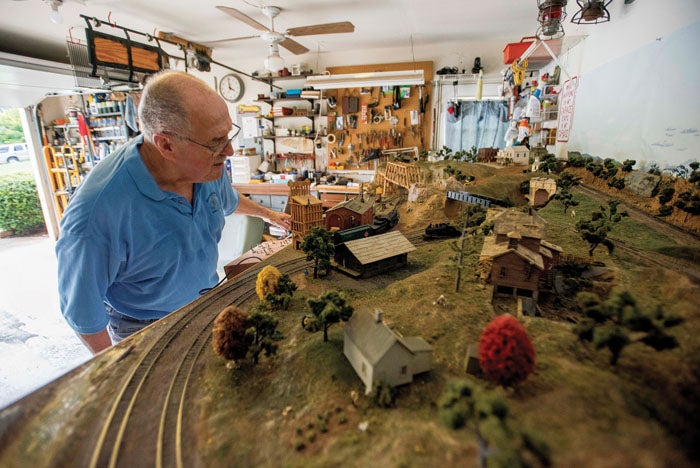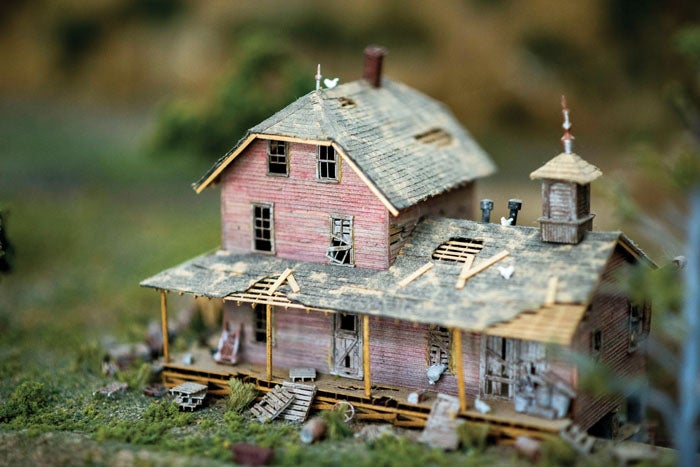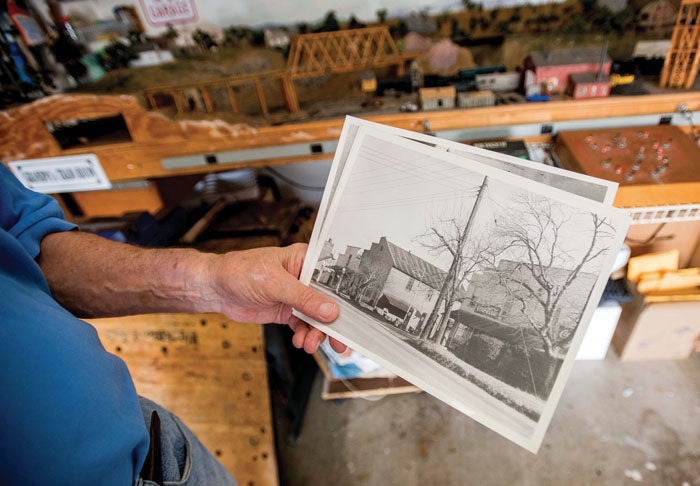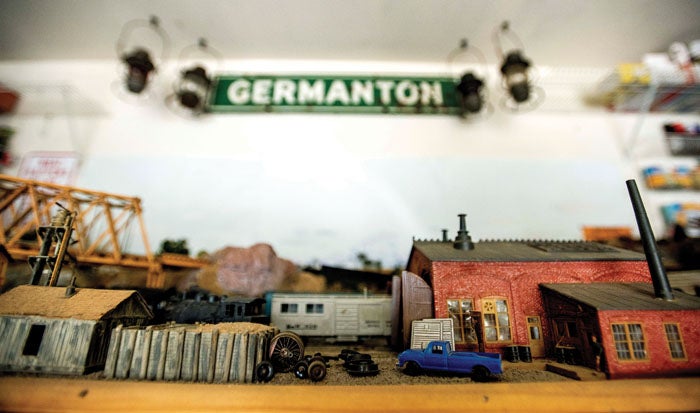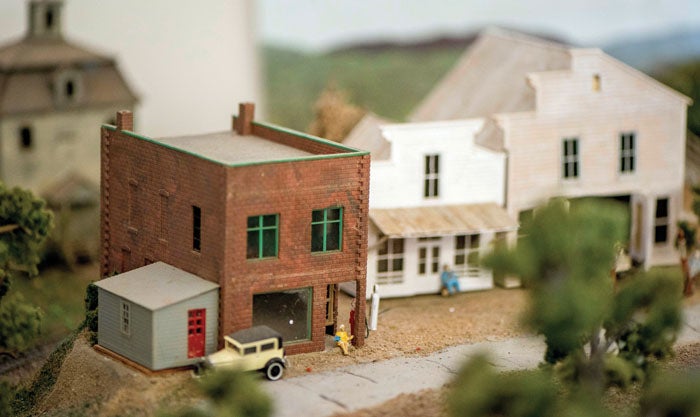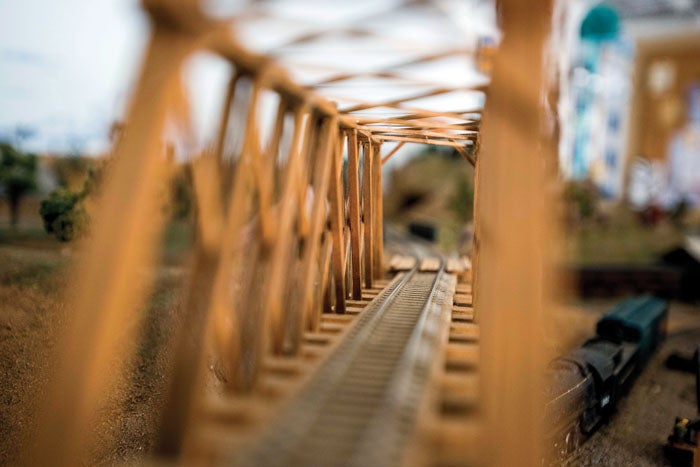Welcome to Germanton: John Wagoner’s model railroad rolls through village of his boyhood
Published 12:00 am Thursday, August 30, 2018
SALISBURY — From his bedroom window in Germanton, a young John Wagoner could see his Grandpa Sid Holland’s store. In the 1930s and ’40s, the store was the little village’s Walmart, selling dry goods, notions and shoes.
What are “notions?” Wagoner has always wondered.
Next to the grocery store was the post office, where Mr. Beck was the postmaster. And the building beside the post office belonged to Mr. Beck’s brother, who ran a garage.
On the corner under a tree stood the “gossip bench,” Wagoner says, “where everyone swapped lies.”
This same array of buildings make up only a part of the large model railroad layout — a diorama, as Wagoner calls it — stretching 12 feet wide and 5 feet deep dead center in his garage.
“That’s my empire,” Wagoner says to visitors taking their first look. “I probably have 17 to 18 years in this one.”
It’s the only Germanton layout of many he has done over time that the 81-year-old Wagoner would say is close to “finished,” though he finds that word troublesome.
“A model railroad is never finished,” he explains. “You’re always doing something else with it.”
For good measure, relying on his memory and black-and-white photographs, Wagoner had added the old Germanton train depot, Mr. Davis’ grist mill, Mr. Beck’s (the brother’s) house, Montgomery’s garage, a road over the railroad tracks and, up on a hill in a secluded, wooded corner of the diorama, a still for making moonshine.
Stokes County in those days had two major industries, Wagoner explained — raising tobacco and making moonshine, “and not necessarily in that order.”
Today’s Germanton community straddles Stokes and Forsyth counties. The 2010 census put its population at 827, and it lies 13 miles north of Winston-Salem and 13 miles south of Danbury.
Established in 1790 and named for an influx of German immigrants who were veterans of the Revolutionary War, Germanton once was the county seat of Stokes County when it encompassed both Stokes and Forsyth.
In his house, Wagoner has a photograph of the building next to his grandparents’ store that served as the courthouse. It was torn down in the 1950s, mostly because it was a hazard for traffic on N.C. 8.
“Every state that I have been in has a Germanton. Some spelled it ‘Germantown,’ including Pennsylvania,” Wagoner says.
Wagoner lived in Germanton until he was a teenager. His family then moved to Hereford, Maryland, while his road-building father was constructing Interstate 83. His mom moved back to Germanton after his dad died.
•••
From heavily modified kits or from scratch, Wagoner built everything in his model railroad layout.
There’s some nostalgia mixed in. In one spot, he created a road-building scene in honor of his dad. The little figure sitting on the store steps in a yellow dress is supposed to be his mother.
“It took me about nine months to build that bridge,” he says of the intricate railroad trellis made of pine. His model train cars and tracks criss-cross a landscape constructed mostly from a plaster-of-Paris-type material.
Wagoner has populated the scene with people, livestock, cars, trucks, tractors, gas pumps, trees, rocks, a tunnel, a rail repair facility and mining operation. He has added a coal shed under construction next to the tracks.
The whole layout seems more industrial than bucolic.
Don’t pay attention to that man peeing against the bridge pole, Wagoner says. And if you look closely, he has taken poetic license by adding novelty items such as a dinosaur and a Roy Rogers-type cowboy on a horse.
For good measure, Wagoner used wallpaper to provide clouds and mountains in the background.
Pointing back to the building that represents his grandfather’s store, Wagoner says it previously had been a bank.
“When I was growing up,” he adds, “it still had its vault.”
A Mason, Wagoner thinks the upstairs of the old bank building also provided the space for one of Germanton’s two short-lived Masonic lodges.
His whole scene lies under a big green sign with white lettering that says “Germanton.” During a trip back to Germanton in 1961, he spied the sign, one that would have been attached to the side of the depot, amid a pile of debris.
It sports several bullet holes from people who used it for target practice.
“I said, ‘That sign’s going home,'” Wagoner recalls.
•••
Wagoner spent most of his adult career working for IBM, ending up in the Research Triangle area around Raleigh. He and his wife, Sandy, have lived in Salisbury for more than 20 years.
For much of his retirement, Wagoner has been a longtime volunteer at the N.C. Transportation Museum, another outlet for his love of trains.
Wagoner conducts tours in the roundhouse at the Spencer museum. “We call it an interpretive volunteer,” he says.
Believe it or not, Wagoner soon will be dismantling his Germanton layout and dramatically downsizing it. Because it is crammed against a back wall, he can’t reach some of the “trouble spots,” such as when one of his trains stalls in the far reaches of the diorama.
“It sort of became a maintenance nightmare,” Wagoner says, “and like I say, I’ve built six or seven of these things.”
Another factor behind Wagoner’s tearing it down and starting over is that his wife’s new Honda Accord needs more room in the garage. She used to drive a shorter Honda Civic.
Wagoner predicts there “will be a lot of surgery to get everything off,” because many of the buildings are imbedded in the landscape. He says all the important buildings from the Germanton of his childhood will return in the smaller layout.
He expects to make some of his new buildings using paper mache.
Though he no longer has family in Germanton, Wagoner still visits there with some “kids” from his childhood once or twice a year.
They go to dinner and talk as if they were back sitting on the gossip bench.
Contact Mark Wineka at 704-797-4263 or mark.wineka@salisburypost.com.


